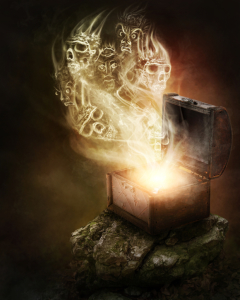The Improbable Truth of Sudden Death with Marijuana

A study by German researchers, “Sudden Unexpected Death Under Acute Influence of Cannabis,” has stirred up a firestorm of controversy as a result of their conclusion that two unexplained deaths were the result of marijuana use. High Times ridiculed the study as another round of “Pot Kills” propaganda. They claimed that news sources like Mail Online were “bastardizing” the story and spreading a certain level of fear. High Times and other news sources then quoted the head of the German Association for Drugs and Addiction (FDR) as saying that cannabis does not paralyze the breathing of the heart. “Deaths due to cannabis use are usually accidents that are not caused by the substance, but to the circumstances of the use.” But let’s take a look at what the study and the researchers actually said.
The case report (here and here) described two young, healthy men who died unexpectedly under the acute influence of cannabinoids (THC). “To our knowledge, these are the first cases of suspected fatal cannabis intoxication where full postmortem investigations, including autopsy, toxicological, histological, immunohistochemical, and genetical examinations, were carried out.” After excluding other possible causes of death, they assumed the men died from “arrhythmias evoked by smoking cannabis.” HOWEVER, “this assumption does not rule out the presence of predisposing cardiovascular factors.”
They noted the absolute risk of cannabis-related cardiovascular effects was low and that the cannabis-induced changes were transient. Yet they cited two studies indicating that the risk of myocardial infarction was elevated almost 5 times in the first hour after smoking marijuana; then it declined rapidly afterwards. “Consequently, the relative risk of cardiovascular effects is most probably increased within this period.”
The Mail Online article cited the research claims of the German study, namely that cannabis can kill, but also stated that: “it remains unclear how it can trigger heart problems.” They pointed to more significant risks associated with marijuana use and quoted David Raynes of the UK National Drug Prevention Alliance as saying about the study’s findings: “These deaths are rare and will remain rare. The real risks are from long-term effects on the young brain.”
There was another alleged case of unexplained death from THC, a young woman named Gemma Moss. A Colorado doctor who works with medical marijuana patients in that state said: “There’s no history of any reports of a death from cannabis ever.” He admitted that it could cause an increased heart rate, so there was a potential problem with someone with a pre-existing heart disease. “But there’s no known dose of cannabis that could kill a human.”
Well, there does seem to be a known dose of THC that would kill a human. The above noted report cited a 2009 study in American Scientist on the toxicity of recreational drugs suggested that using more than 1,000 times the effective dose of THC in marijuana would have to occur for possible fatalities. This fact—that typical doses of THC are well below the supposed lethal dose—was also noted by the German researchers. But they suggested further study of the potential issue and cautioned against individuals who are at high risk of cardiovascular disease to avoid the use of cannabis.
It is impossible to predict how certain individuals respond to cannabis smoke, as underlying illnesses and complicating factors may be unknown. The presented case highlights the potentially hazardous cardiovascular effects of cannabis in putative healthy young persons.
The researchers had an approach that Sherlock Holmes would have been proud of. They said: “After exclusion of other causes of death we assume that the young men died from cardiovascular complications evoked by smoking cannabis.” Holmes famously said: “When you have eliminated the impossible, whatever remains, however improbable, must be the truth.” It seems to me that pro-marijuana individuals and organizations are dismissing the results of the study out-of-hand for their own propaganda purposes.

